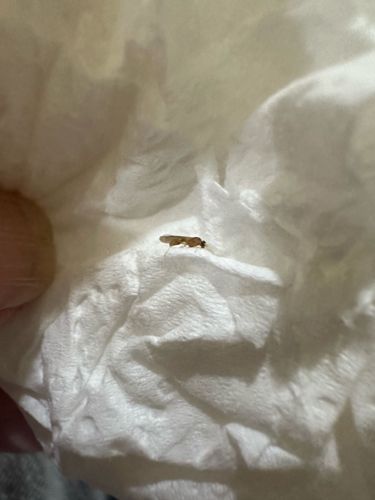Fungus Gnat
Scientific Name: Bradysia spp. (though various genera exist in the Sciaridae family)
Order & Family: Order Diptera, Family Sciaridae (dark-winged fungus gnats)
Size: Typically 2-8 mm (approx. 0.08-0.3 inches) in length, with delicate bodies and long legs and antennae.

Natural Habitat
Damp, rich soil, especially in potted plants, greenhouses, and areas with decaying organic matter. They thrive in consistently moist conditions.
Diet & Feeding
Adult fungus gnats do not eat and are primarily reproductive. Larvae, however, feed on fungi, decaying organic matter, and fine root hairs of plants, particularly in wet soil.
Behavior Patterns
Adults are weak fliers and are often seen near the soil surface of potted plants or flying in erratic patterns. They are attracted to lights. Females lay eggs in moist soil, and larvae develop in the soil, feeding before pupating and emerging as adults. Their life cycle from egg to adult can be as short as 3-4 weeks depending on temperature and humidity.
Risks & Benefits
Risks: Fungus gnats are primarily considered a nuisance. While adult gnats are harmless, their larvae can cause damage to plant roots, especially seedlings or stressed plants, leading to wilting and stunted growth. They can also spread plant pathogens. Benefits: In natural ecosystems, their larvae contribute to decomposition by feeding on decaying organic matter and fungi.
Identified on: 11/9/2025